Cole is a pathologist, whose job is to view large numbers of pathological sections and provide pathology reports to clinicians, so he is a “doctors’ doctor.” He found that there had been a recent increase in the number of adults with childhood diseases and rare cancers, and that these rare diseases are rising at an abnormal rate and in abnormal age groups. At the same time, he also noted an increase in all-cause deaths among vaccinated individuals compared to unvaccinated individuals.
With professional sensitivity, Cole is troubled by these phenomena. And he is absolutely right, as we need to pay attention to these messages from the microscopic world.
What Cole is seeing is by no means isolated.
Recently, we received a large number of spontaneously reported cases of leukemia from mainland China, and all of the patients have the common characteristic of having been vaccinated with COVID-19 vaccines.
Final Analysis of 845 Post-Vaccination Leukemia Cases
As of June 4, 2022 at 10:00 pm EST, we had received two tables with a total of nearly 1,000 reports of post-vaccination adverse leukemia events. In our previous article, due to time constraints, we analyzed only 235 valid cases. This time, we will provide an analysis of all cases.After careful verification, we eliminated duplicate cases (some cases were reported in two different groups in order to increase the chance of being found by people) and cases with incomplete information, and there are 845 valid cases left.
We adopted a rigorous and conservative approach, one which is accepted by the industry, to tally the data. For instance, if the time of onset of the illness in one case didn’t have a precise date but only the month, we would provide some approximate and ambiguous data in a way which was least conducive to causality analysis.
Gender Analysis
Fifty percent of the patients were male. The male predominance is consistent with the gender trend of leukemia incidence.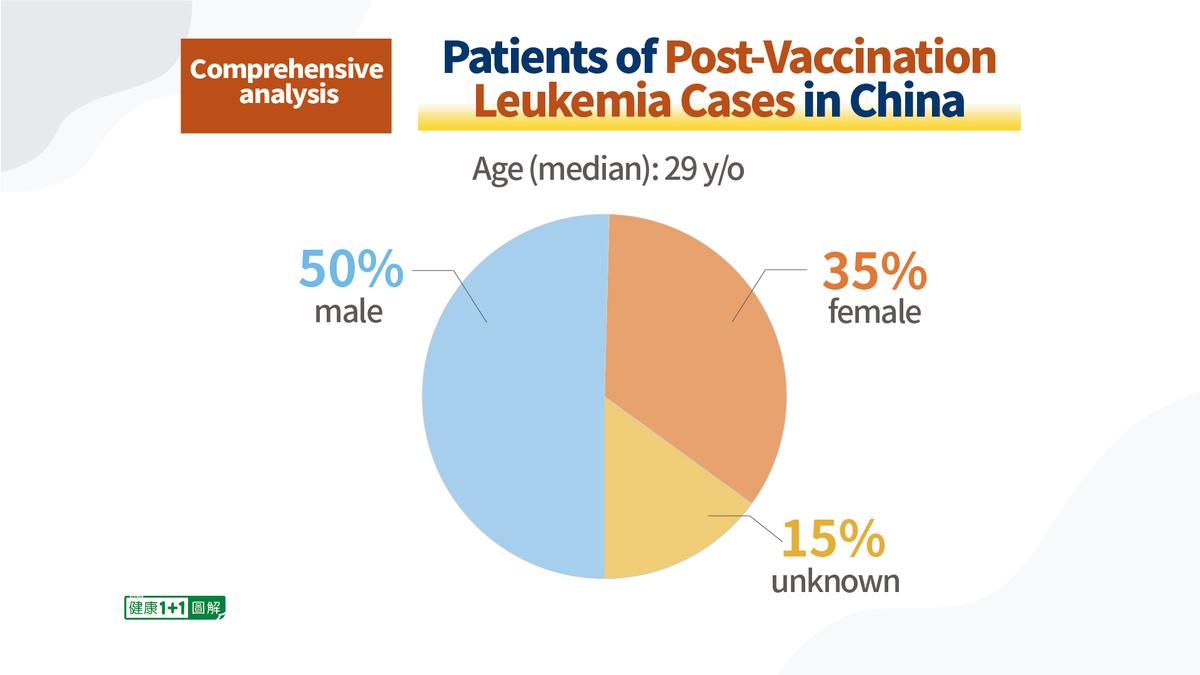
Age Analysis
The patients’ age range was 1 to 80 years old, with a median age of 29 years old, and half of the patients were between 12 and 45 years old.Geographic Distribution
The occurrence of leukemia is usually associated with local environmental pollution or radiation. However, these reported cases were found widely across 29 provinces and central government directly controlled municipalities in China, with no distinctive geographical features. The only common feature was the patients’ prior vaccinations by COVID-19 vaccines, so this is a factor we focused on.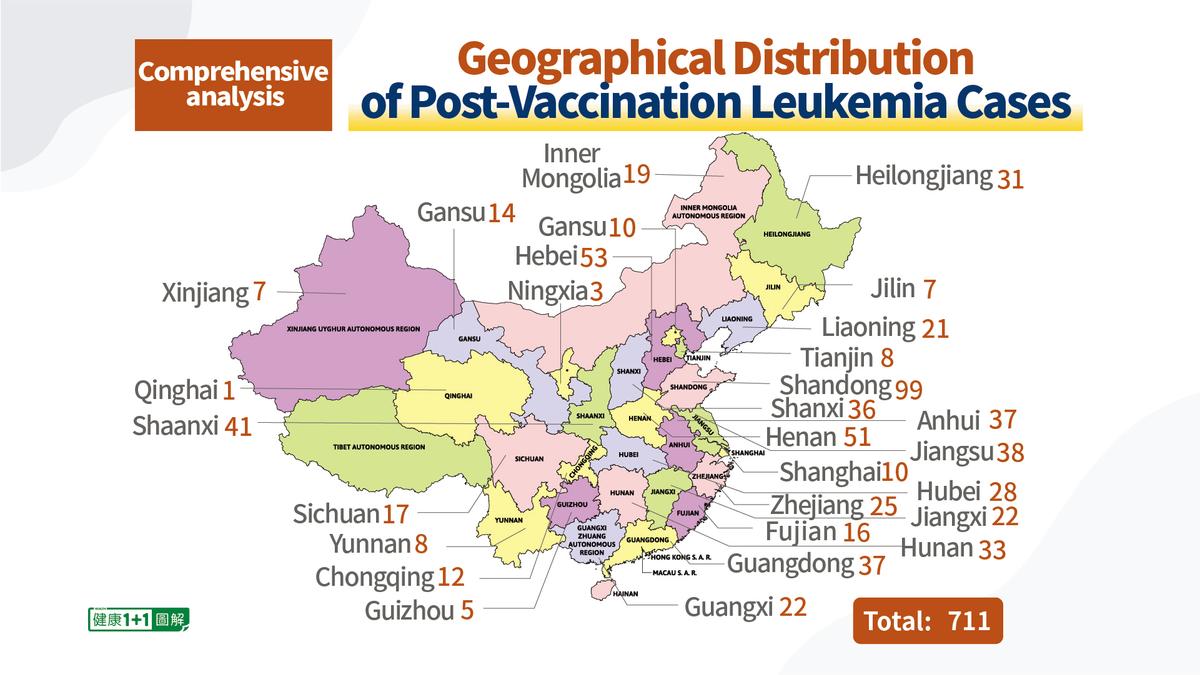
Vaccines
Among patients who were injected with one brand of vaccine(s), the vaccine produced by Sinovac Life Sciences Co., Ltd accounted for 39 percent, with the highest proportion; and the vaccine by Beijing Institute of Biological Products Co., Ltd. accounted for 12 percent. There are also some patients who received multiple vaccines from multiple brands.Types of Leukemia
Among these leukemia cases, 49 percent were acute myeloid leukemia cases, followed by acute lymphoblastic leukemia at 32 percent.Overall, 81 percent of the patients have acute leukemia.
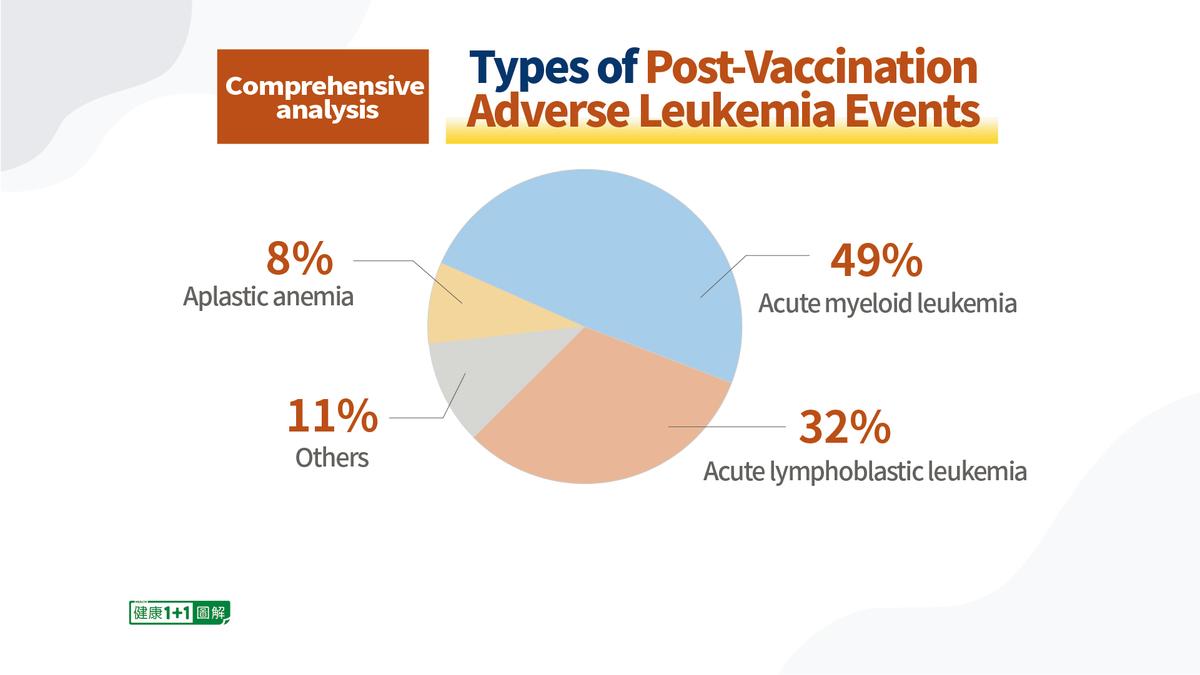
Examples of Cases
Case 1061: Male, 30 years old. On June 29, 2021 he received the first jab made by Sinovac Biotech, and on July 21, 2021 he took the second jab by Chengdu Biology. On September 6, 2021 he received the physical examination for college freshmen and found abnormal white blood cells, and was subsequently diagnosed with acute myeloid leukemia, M3. However, during the college entrance examination before jabs, everything was normal. He was also a usually healthy person. He hardly catches a cold or takes any medicine. He has not been allowed to eat junk food. Genetic and environmental factors are excluded in this case.Temporal Association Between Vaccination and Leukemia
How long after vaccination were these patients diagnosed with leukemia? This is a critical piece of information.We analyzed the data in detail: 51 percent of patients had symptoms or were diagnosed 102 days (median) after their second dose, with an overall range of 2 to 5 months. This is consistent with the onset of leukemia. The onset of leukemia involves a genetic mutation that does not develop in one day, so it is usually calculated on a monthly basis.
There are also some people who developed symptoms or were diagnosed about two months after receiving their third dose.
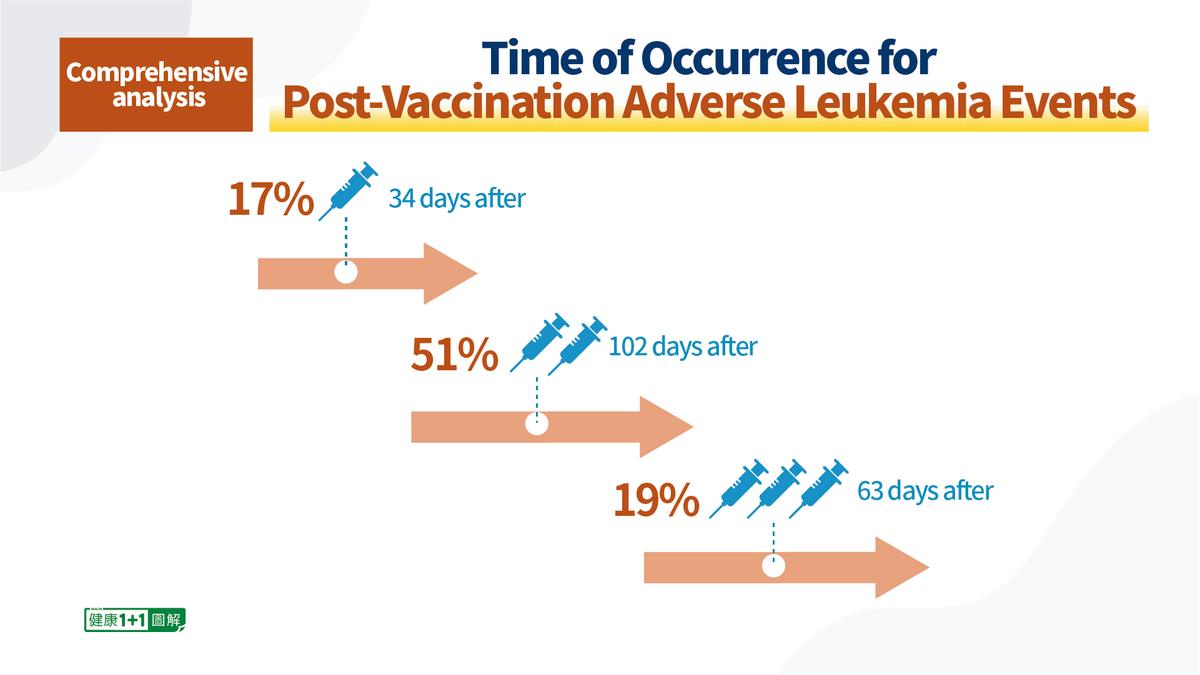
Patients’ Conditions
As of June 4, 2022, when we received the reports, 77 percent of these leukemia patients were still being treated, 7 percent were awaiting transplantation, and 5 percent had passed away. A small number of people had given up treatment, normally due to financial reasons or too late to be treated.3 Lines of Evidence Explaining Why Leukemia Occurs After Jabs
As we know, the main cause of leukemia is DNA mutation in hematopoietic cells.‘These Leukemia Cases Are Related to the Vaccines’ Is Not Convincing Enough?
After our preliminary analysis of the cases, some readers commented online that they too encountered leukemia cases after vaccination, either they themselves were the patients or their family members were. They tried to seek help from their doctors and asked if it might be related to the vaccines, but they did not receive any attention from their doctors.A few people commented that there was no need to pay so much attention to these cases, while others considered it a smear campaign against China. One reader commented, “With a normal incidence rate of 30 in a million per year, since 1.2 billion people in China are vaccinated, it would be normal for 36,000 people to develop leukemia. We can’t rule out this situation, so it’s not convincing enough.”
I remember when I was working in a major international pharmaceutical company, if severe adverse events appeared after a new drug was launched in the market, we had to send our staff to visit the hospitals and the patients, regardless of whether or not their illness was related to the drug, as long as an adverse event had been reported. And finally we had to submit an investigation report to the pharmaceutical regulator. I once visited a patient by train and stayed up for two nights to learn about the case.
In this industry, this is called “due diligence.”
This is a matter of basic professional conduct and ethics, and the results of the final analysis are not important. What’s important is whether or not we have fulfilled our responsibilities, as well as the medical treatment of the cases.
Even if the leukemia incidence decreased, rather than increased, so what? Aren’t these 800 patients still alive? Aren’t their lives still in jeopardy?
Regardless of whether I was a doctor in the past or later a pharmacovigilance specialist in a pharmaceutical company, what I am most concerned about is whether there is a causal relationship between these 800 plus cases of leukemia and the vaccination. This is what we should do, as we value the people and their lives.
The key is that among these leukemia patients, there is a consistent pattern. That is, they have no history of exposure to radiation, no family history of hereditary diseases, and no geographical characteristics. The only thing they have in common is that they have all received COVID-19 vaccines, and in most cases, their symptoms appeared on average three months after their second dose. This is a very worrying pattern, just as concerning as the microscopic pattern observed by Dr. Cole.
And the issue is not over yet–mass mandatory vaccination is still in progress. If the vaccines are indeed linked to these adverse events, measures will have to be taken, or vaccinations will have to be suspended for some people. These are all perfectly normal measures. Just a year ago, there were at least two such incidents.
3 Natural Foods to Prevent and Improve Leukemia
So, if someone unfortunately suffers from leukemia, how can one treat it? And what natural foods can help prevent leukemia?Leukemia is usually treated by chemotherapy or transplantation. As we all know, the leukemia patient’s white blood cells are affected by external harmful factors during their development process and undergo genetic mutations. As a result, they escape the normal cycle of cell life, and start multiplying indefinitely. The genes are the code of life, and the mutation of genes touches on some things in the nature of our life.
In order to change the abnormal state of our cells, besides taking medication, we need to use some more natural methods to improve our health.
Mangosteen (Xanthone)
There is an element in mangosteen called xanthone. In a study published in the Journal of Natural Products, the Gifu International Institute of Biotechnology in Japan showed that xanthones could induce apoptosis in leukemia cell lines.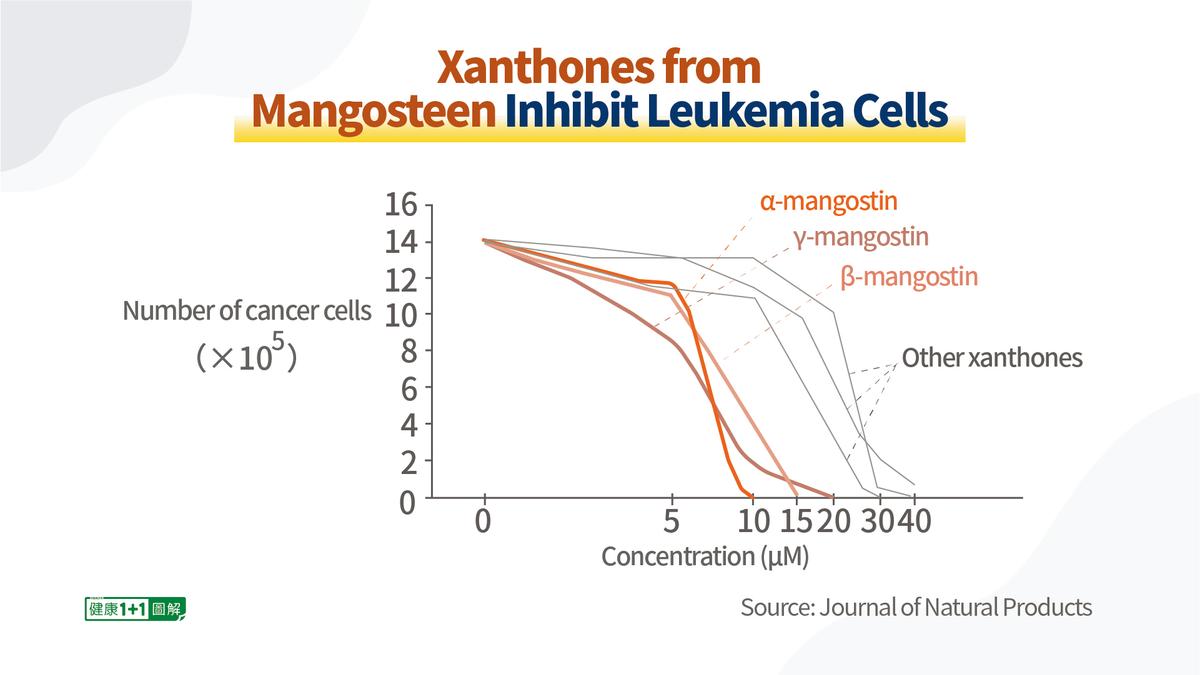
The researchers studied six xanthones and discovered that all of them showed growth-inhibiting effects on cancer cells. Among them, α-mangostin showed complete inhibition of leukemia cells at a concentration of 10 μM. Moreover, it does not cause toxicity to normal cells.
Almond Mushroom
Almond mushroom is also known as Agaricus blazei Murill (AbM). The Japanese discovered its anti-cancer and immunity-boosting effects and therefore developed many types of health food from it.It was discovered that the addition of 5 percent and 10 percent of Andosan inhibited the growth of cancer cells by 17 percent and 23 percent, respectively.
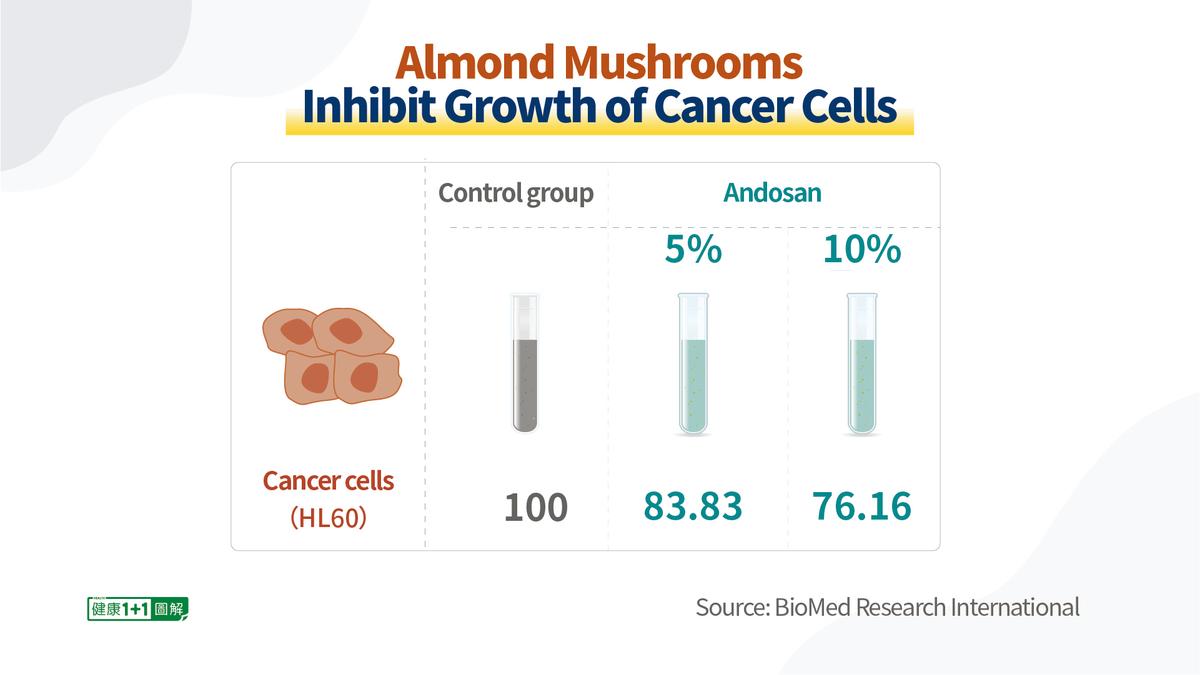
In a cell cycle study, the researchers cultured cells of different cell phases (sub-G1, G1, S and G2 phases) in the experimental group of 10 percent Andosan and the control group and observed the changes.
As we know, cell replication has cycles of birth, aging, illness, and death; and the same is true for cancer cells. It was discovered that the percentage of cells in the apoptotic phase (sub-G1 phase) was higher in the cells cultured with the addition of Andosan 10 percent, while the percentage of cells in the Growth 1 phase (G1 phase) was lower, suggesting that Andosan can induce apoptosis in cancer cells.
The ingredients in almond mushroom can also enhance the therapeutic effect of chemotherapy. So it will be more effective if we combine chemotherapy with dietary therapy.
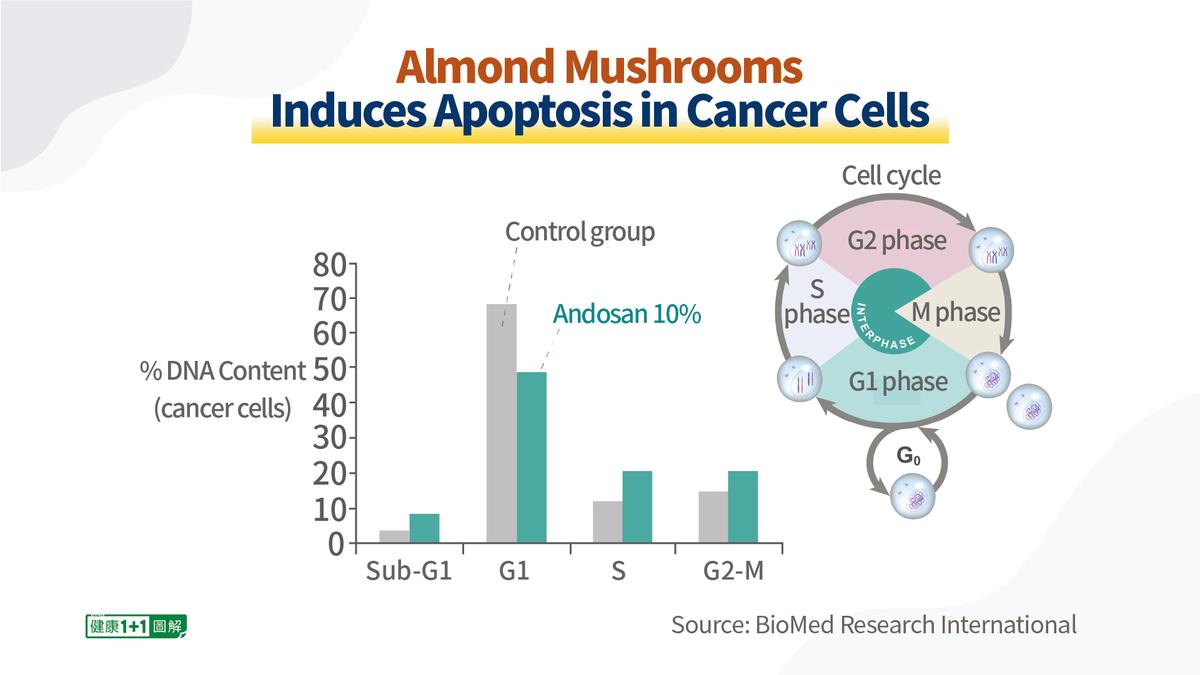
Green Tea
Tea is one of the most popular beverages, and it’s a healthy one. A study published in Nature Reviews Cancer showed that green tea extracts inhibited the formation and development of tumors in different organs in animal studies.Green tea contains a large amount of catechins (including EGCG), which inhibit many hematological cancers. Catechins can act on multiple targets of cancer cells, inhibit cancer cell proliferation, enhance cancer cell apoptosis, and inhibit cell invasion, angiogenesis, and metastasis.
A characteristic of many natural drugs is their ability to act on “multiple targets.” Western medicines usually only work on a “single target.” This makes a big difference in their effectiveness.
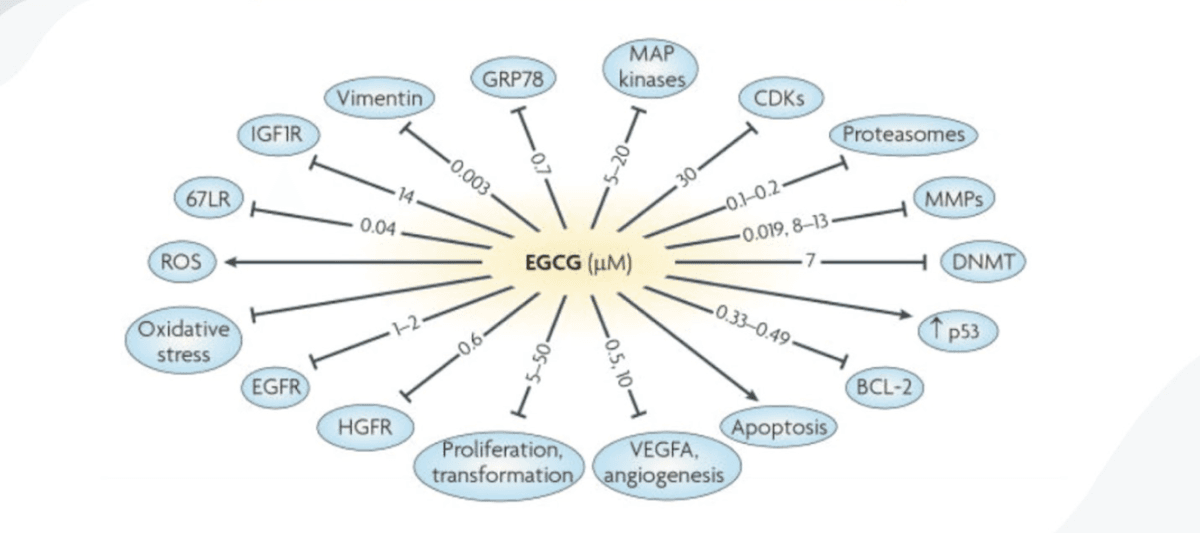
This study discovered that people, who drank one to five cups of tea per day, had varying degrees of risk reduction for leukemia, compared to those who did not drink tea. The risk of leukemia was significantly lower in those who drank five cups per day.
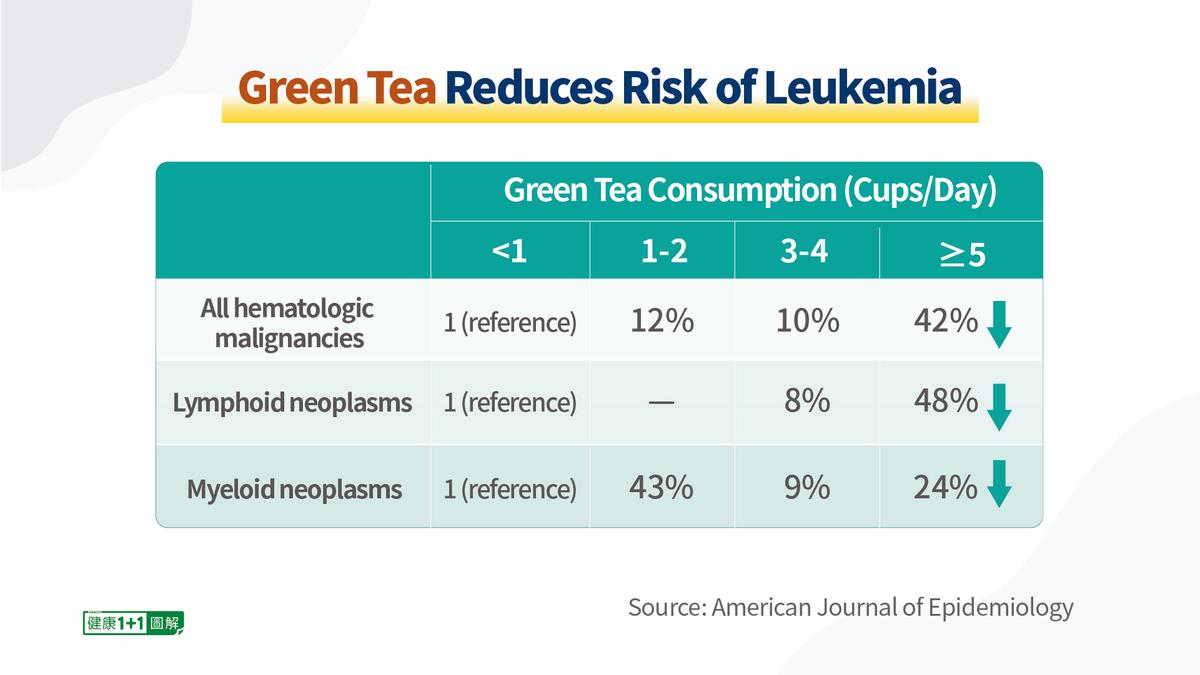
We need to pay attention to the water temperature when making green tea, as it should not exceed 80 ℃, because too high a temperature may damage catechins and other substances in the tea.
We hope that these natural plant research data can help you prevent and treat leukemia. In addition, please also try to avoid contact with carcinogens and radiation, and limit your exposure to electronic devices.

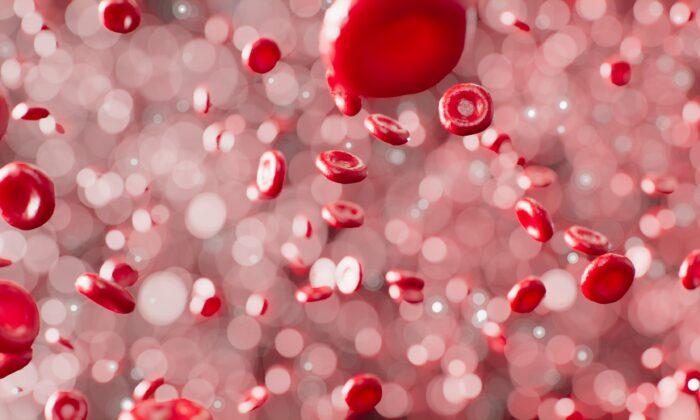

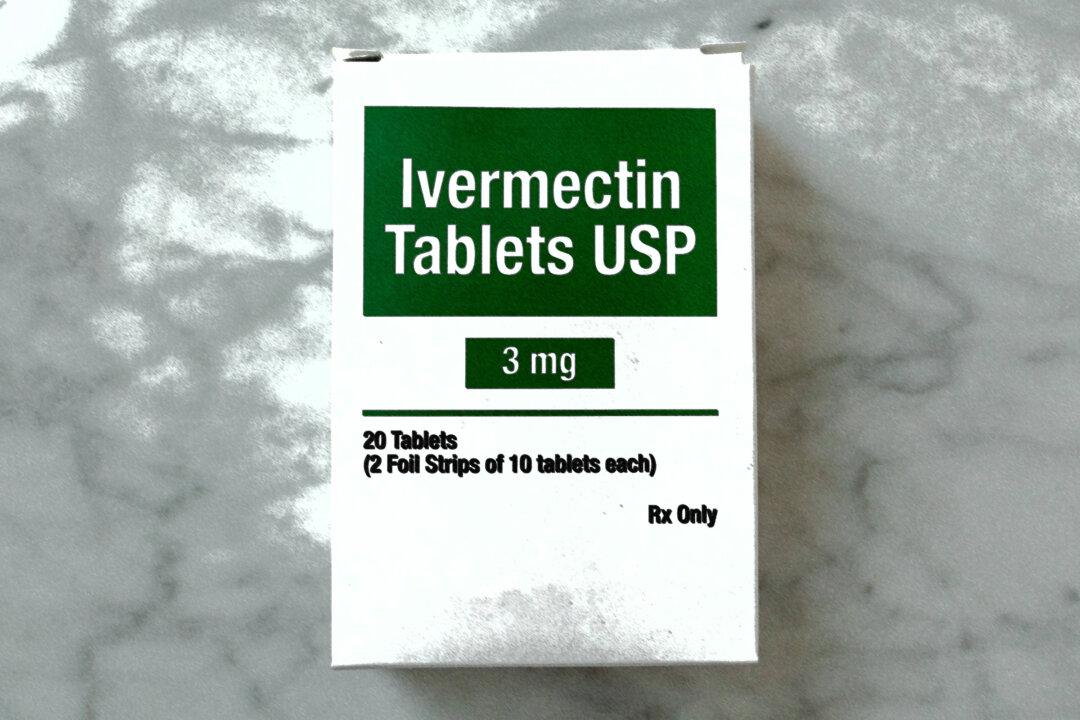
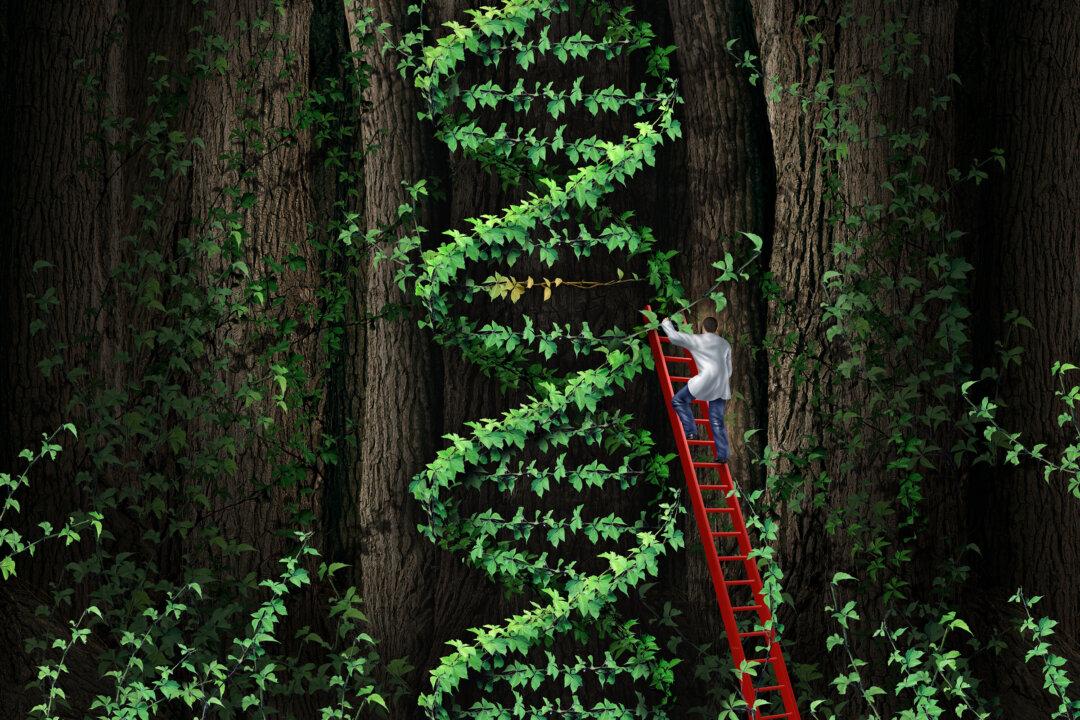
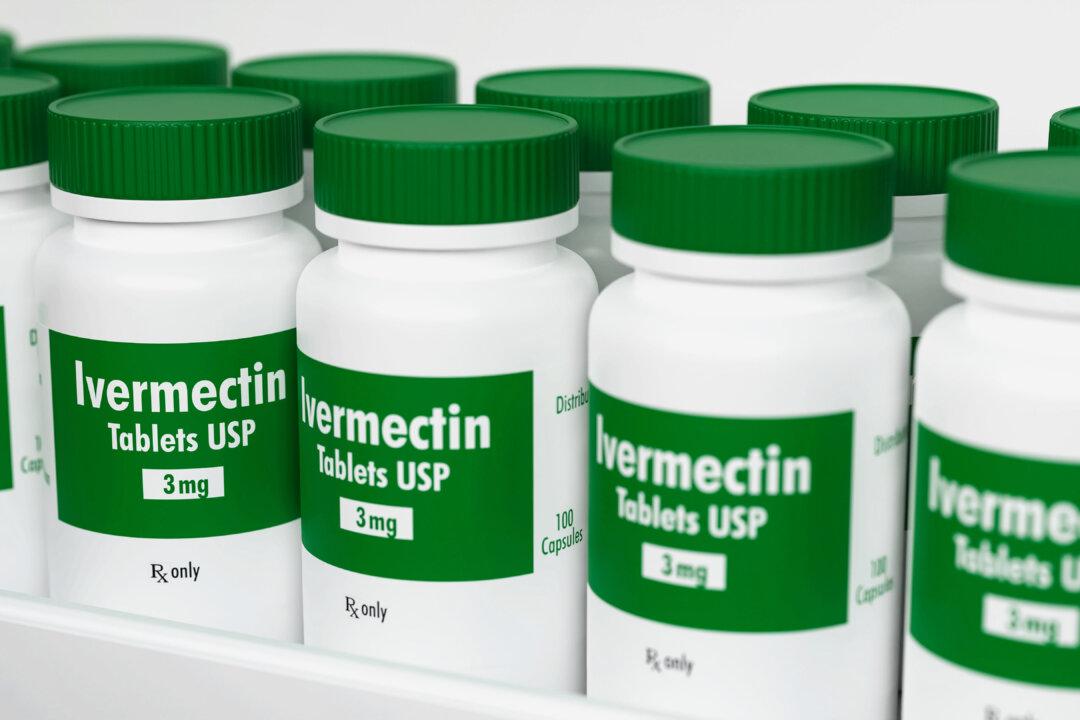
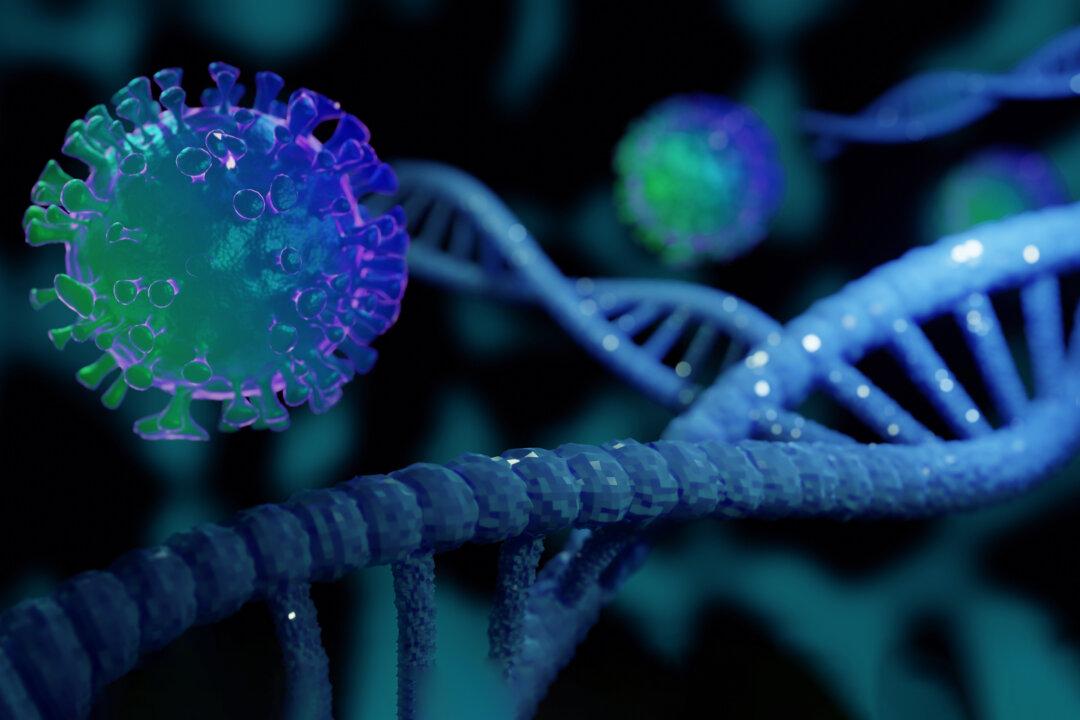
Friends Read Free